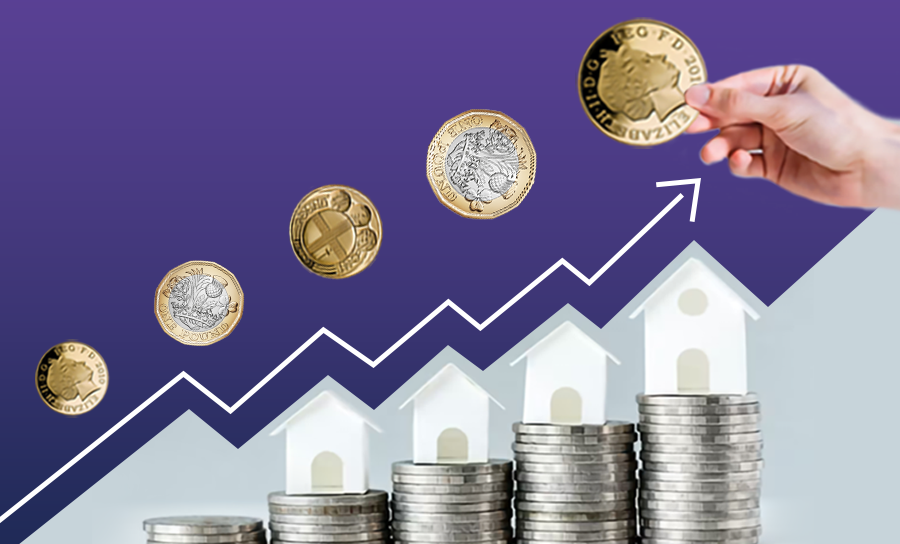
Are you ok with optional cookies ?
They let us give you a better experience, improve our products, and keep our costs down. We won't turn them on until you accept. Learn more in our cookie policy.

In the current economic crisis, rental income is extremely important in the United Kingdom. With job security and financial stability uncertain, earnings from renting provides a critical lifeline for many people. It provides a constant flow of revenue, assisting homeowners in covering mortgage payments, property expenses, and even supplementing their own income.
Furthermore, earnings from renting enables property owners to maintain financial stability, manage economic crises, and maybe prevent foreclosure or repossession. Earnings from renting provides a safety net for both property owners and tenants, helping to the overall stability of the UK housing market in these difficult times.
The money received by an individual or business by renting out a property to renters is referred to as earnings from renting. It is a sort of passive income earned through the ownership and leasing of real estate. Earnings from renting can be generated by a variety of properties, including single-family homes, apartments, commercial spaces, and holiday Leases.
As per Statista, Lease housing is very important in the United Kingdom. Over one-third of the approximately 23.5 million households were private or social renters.
While the proportion of renters has stayed largely consistent over time, renting from a private landlord has grown over time vis-à-vis renting through a local authority or a housing association. The residential Lease market has tripled in the last 20 years, and an October 2022 prediction indicates that rents will continue to grow through 2026.
People in the United Kingdom can choose from a variety of property ownership alternatives to benefit from earnings from renting. Here are a few possible approaches:
Shared ownership
Joint Ownership
Sole Ownership
Freehold
Leasehold
Commonhold
Earnings from renting can indeed be a second source of income for individuals in the UK. Here's an explanation of how it works:
To generate earnings from renting, you first need to own a property. This can be a residential property (house, apartment, etc.) or a commercial property (office space, retail store, etc.).
Once you own a property, you can rent it out to tenants. Finding suitable tenants may involve advertising the property, conducting viewings, and selecting tenants who meet your criteria.
A tenancy agreement, or a long lease, is signed between the landlord (property owner) and the tenant. This agreement outlines the terms and conditions of the tenancy, including the duration, Lease amount, payment schedule, and any specific rules or restrictions.
The lease revenue is the amount of money the landlord receives from the tenant(s) as payment for occupying the property. It is typically paid monthly, but the frequency can vary depending on the terms of the lease. The lease revenue serves as a regular source of cash flow for the landlord.
Landlords in the UK can deduct certain expenses from their lease revenue for tax purposes. These expenses may include mortgage interest payments, property maintenance costs, insurance premiums, property management fees, and other relevant expenses. By deducting these expenses, landlords can reduce their taxable lease revenue.
Lease income is subject to taxation in the UK whether the landlord is a UK tax resident or not. Landlords are required to report their lease revenue and expenses on their tax returns. The tax rate depends on the landlord's overall income and tax bracket. It's important to keep proper records of lease revenue and expenses to ensure accurate reporting and compliance with tax regulations.
Landlords have the option to manage the lease property themselves or hire a property management company to handle tenant-related matters, property maintenance, and other administrative tasks. Property management services can be particularly beneficial for landlords who own multiple properties or prefer to have professionals handle day-to-day operations.
According to Savills, in the long run, lease growth will be determined by what households can afford. While short-term changes in lease values may occur as local supply and demand move, growth over the next five years will be determined by the status of the economy and the strength of income growth. As a result, we predict that any rent declines will be lower than those in capital values and will likely return to growth sooner.
When we released our forecasts in November 2019, we estimated lease growth to be around 3.0% per year for the next five years. We anticipated that this would result in an overall lease growth of 15.4% for mainstream UK rents between 2020 and 2024.
According to the Statista forecast, it is projected that there would be an increase of more than 18 percent in the lease costs for residential properties in the United Kingdom (UK) by the year 2027. It is anticipated that the growth will be more notable in the first few years, with an annual increase of four percent in 2023 and 2024 respectively. The cost of purchasing a home is often cited as a significant factor in determining the trajectory of lease prices. There is a rise in the number of people looking for lease properties as it gets more difficult to afford to buy a property.
According to the data collected in the Provestor in 2022, the average price of a lease experienced an increase of 6%. In spite of the fact that the economy is in an unstable state, it is anticipated that this growth will continue at a rate of 5% in 2023 and 4% in 2024. These projections are based on current trends. At the moment, the average lease yield in the North is 7.4%, whilst the yield in the South is 5.2%, resulting in a difference of 2.2% between the two regions.
The North East and the Midlands appear as prospective places to concentrate on for those wishing to build their property investment portfolio in 2023. These regions offer the highest lease yields, making them attractive regions to invest in.
You must pay income tax on the rent you get from your properties as a landlord. This article explains how to calculate what you owe and how lease revenue is taxed. But, before we dive into the tax implications of rental revenue, it's important to understand what falls within the tax umbrella.
Your revenue consists mostly of rent, but it also includes any other payments from renters for services generally supplied by a landlord. These are some examples:
Cleaning of public areas
Bills for utilities such as hot water, heating, broadband, and water
Organising property repairs
For example, a landlord who charges £750 per month in rent plus bills must recognise the entire amount as income (albeit some of these expenditures may be charged as expenses).
If the renter decided to sacrifice £500 of their deposit at the conclusion of the term to finance property repairs, this would be counted as rental revenue. Even though the rent is £9,000 per year, the landlord must record an income of £9,500.The landlord, on the other hand, might deduct the £500 they paid for repairs as an expense.
Your rental gains are taxed at the same rates as your business or job income - 0%, 20%, 40%, or 45%, depending on whatever tax bracket the income comes into.
According to Which, your lease revenue is added to your other income, which may push you into a higher tax rate. As an example:
Your annual salary is £40,000.
You profit £13,000 from a rental property.
This puts you beyond the £50,270 higher-rate tax threshold in 2023-24.
You'll pay 40% on any amount over £2,730.
According to the 2021 Census stated by The Week, the number of privately rented households has more than doubled over the last two decades, reaching 5 million. In December 2022, average rents in the United Kingdom rose 10.8% year over year.
As per Charcol, you will pay 20% tax on lease revenue if it is more than £12,570 but less than the higher rate level of £50,270. Above £50,270 and below the extra rate threshold of £150,000, lease revenue is taxed at 40%. Above the extra rate threshold of £150,000, lease revenue is taxed at 45%.
In the second half of 2021, the annual growth rate of private rental prices in the United Kingdom began to accelerate. With the exception of London, all regions experienced annual price increases. In 2022, the annual percentage change in rents increased in all regions, including London, and this trend has continued into the beginning of 2023, says ONS.
The fundamental reason that rental costs have risen so much is that demand has outpaced the supply of available units. This was worsened in September by the financial market chaos that followed the Liz Truss government's mini-budget, which caused a sharp increase in mortgage rates, says Sky.
Annual percentage change in UK private rental prices by country. According to the ONS, private rental costs in England increased by 4.3% in the year ending January 2023.
By 2022, the proportion of households occupied by private renters would have reached 19%. This was slightly greater than the previous year. In 2021, around 4.6 million households in England will be privately rented as showed by Statista.
At the moment, the average rental yield in the North is 7.4%, while the average yield in the South is 5.2%, implying a 2.2% difference. For property owners wishing to expand their portfolio in 2023, the North East and Midlands may be the best places to hunt for the highest rental yields says Provestor.
Earnings from renting has arisen as an important secondary source of income in the United Kingdom. The increase in rental properties and, consequently, rental revenue has given individuals a feasible means of augmenting their earnings. The demand for rental houses has increased throughout time, owing to reasons such as population expansion, changing lifestyles, and the rise of the sharing economy. This development has offered chances for property owners to earn a good living by renting out their properties.
Furthermore, the proliferation of internet platforms and property management services has made it easier for landlords to advertise their properties and find prospective tenants, boosting the rental market even further. Many investors are drawn to the constant rental revenue stream because they regard it as a relatively stable and successful long-term investment option.
Please Note: Nothing on this website should be construed as tax advice. Information here is meant to be a general overview only and Novyy does not provide tax advice. Please consult your tax professional for further information on any matters which may be relevant to your individual tax circumstances.
Please Note: Nothing on this website should be construed as tax advice. Information here is meant to be a general overview only and Novyy does not provide tax advice. Please consult your tax professional for further information on any matters which may be relevant to your individual tax circumstances